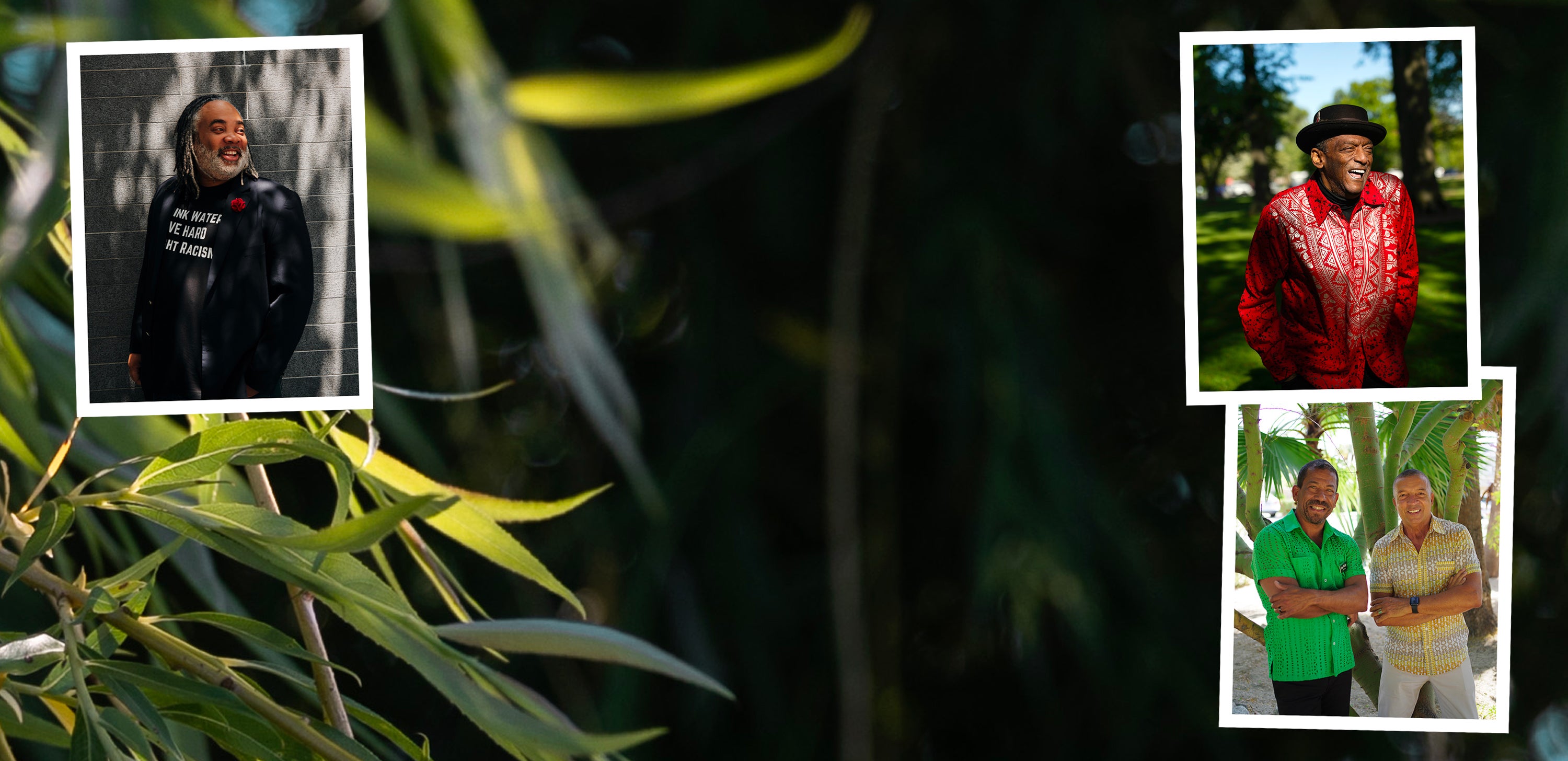When HIV and AIDS get media attention, the conversation often centers around the onset of the epidemic and the lives lost.
What’s often skipped are the lives of those who survived.
The team at the Black Emotional and Mental Health Collective (BEAM) knows that HIV-positive elders often fall through the cracks when it comes to funding and visibility, particularly when they’re of color and advancing in age.
This in no way reflects the prevalence of the population or the presence of programs.
Instead, it highlights an opportunity for BEAM to provide tangible support to some of the ongoing healing-centered work that’s happening within this community across the country.
So they leaned in to support Black gay men over the age of 50 who are living with HIV, awarding a grant in partnership with Healthline to programs doing this important work.
“We hope that we are able to elevate the work these organizations are doing in their communities,” said Yolo Akili Robinson, executive director of BEAM. “They recognized the need and took the next step to alleviate the barriers of Black gay men over the age of 50 living with HIV.”
Bringing people together through wellness
Each grant recipient mentioned the issue of isolation within the community and a desire to curate space dedicated to wellness in a holistic way, including yoga, music, weekend retreats, and ongoing facilitation.
Healthline connected with each lead organizer of the awarded efforts to talk about their ongoing work and the role that this funding will have on their programming for the aging HIV-positive community.
The T.R.U.T.H. Project
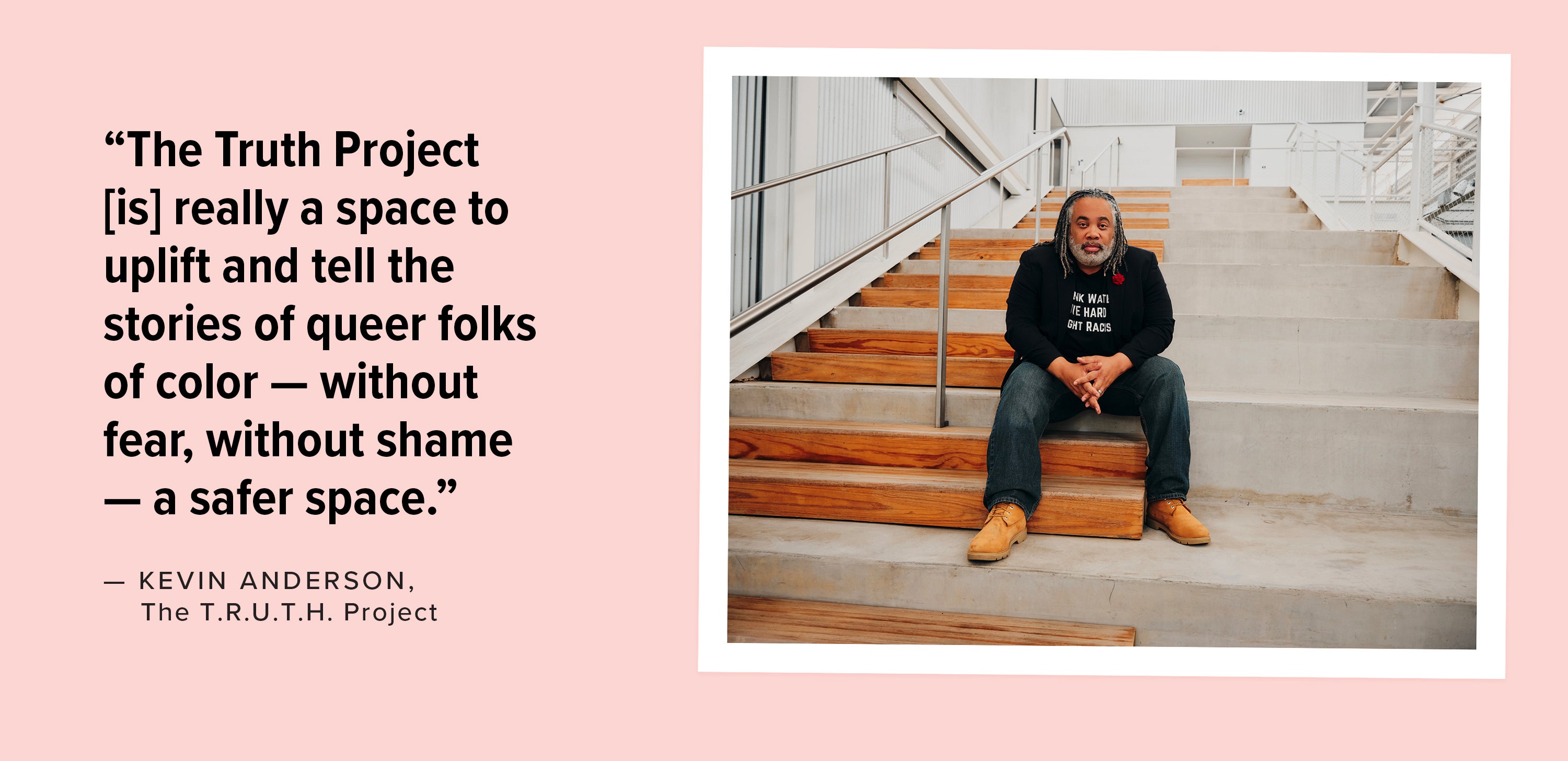
Photography by Zerb Mellish
The T.R.U.T.H. Project (Telling Real Unapologetic Truth Through Healing), a nonprofit based in Houston and led by CEO and founder Kevin Anderson, is one of the recipients of the BEAM grant.
This organization focuses on LGBTQ People of Color, promoting their emotional, mental, and sexual wellness through art. The grant awarded will fund a wellness retreat for aging Black gay men living with HIV.
Anderson began his curation of this community space in 2009 with an open mic showcase called Heart and Soul. It flourished.
He shared that because these art-focused gatherings were intentionally non-discriminatory, the queer community naturally embraced it, leading to the creation of The T.R.U.T.H. Project.
“We’ve been … educating and bringing community together — our allies and Queer community — and we do a lot of heavy promotion around our mental health, our emotional health, and our sexual health,” Anderson said.
One of the groups that the project hosts is called Plus United, a space for men and nonbinary People of Color who live with HIV to gather. One in 4 of the attendees are Black gay men over the age of 50.
Anderson shared that when he learned of the BEAM grant, he was excited about the opportunity to give this specific demographic more individualized attention.
When he asked them about their needs, feeling alone was at the top of the list.
“A lot of it was that coming out of the pandemic, [they] just wanted to meet more and in an in-person space,” explained Anderson. “A lot of them were expressing feeling isolated.”
While he has the majority of the plans for the wellness retreat mapped out — including yoga, facilitated talks, daily walks, and art therapy — Anderson is also planning a gathering prior to the retreat’s launch in an effort to get additional insight from folks within the community.
“[I want to] hear more from them about if they were to be part of this retreat what they would want it to look like so I can include those additional layers,” Anderson said.
Let’s Kick ASS Palm Springs and Brothers of the Desert
Jax Kelly and Tim Vincent of Let’s Kick ASS Palm Springs and Brothers of the Desert, respectively, also spoke to the need for connection between community members.
“Our demographic is 50-plus, for the most part, and I would say most of them are either very affected with HIV or living with HIV, because that’s just the nature of what happened in our communities,” said Vincent.
Again, isolation is a primary issue.
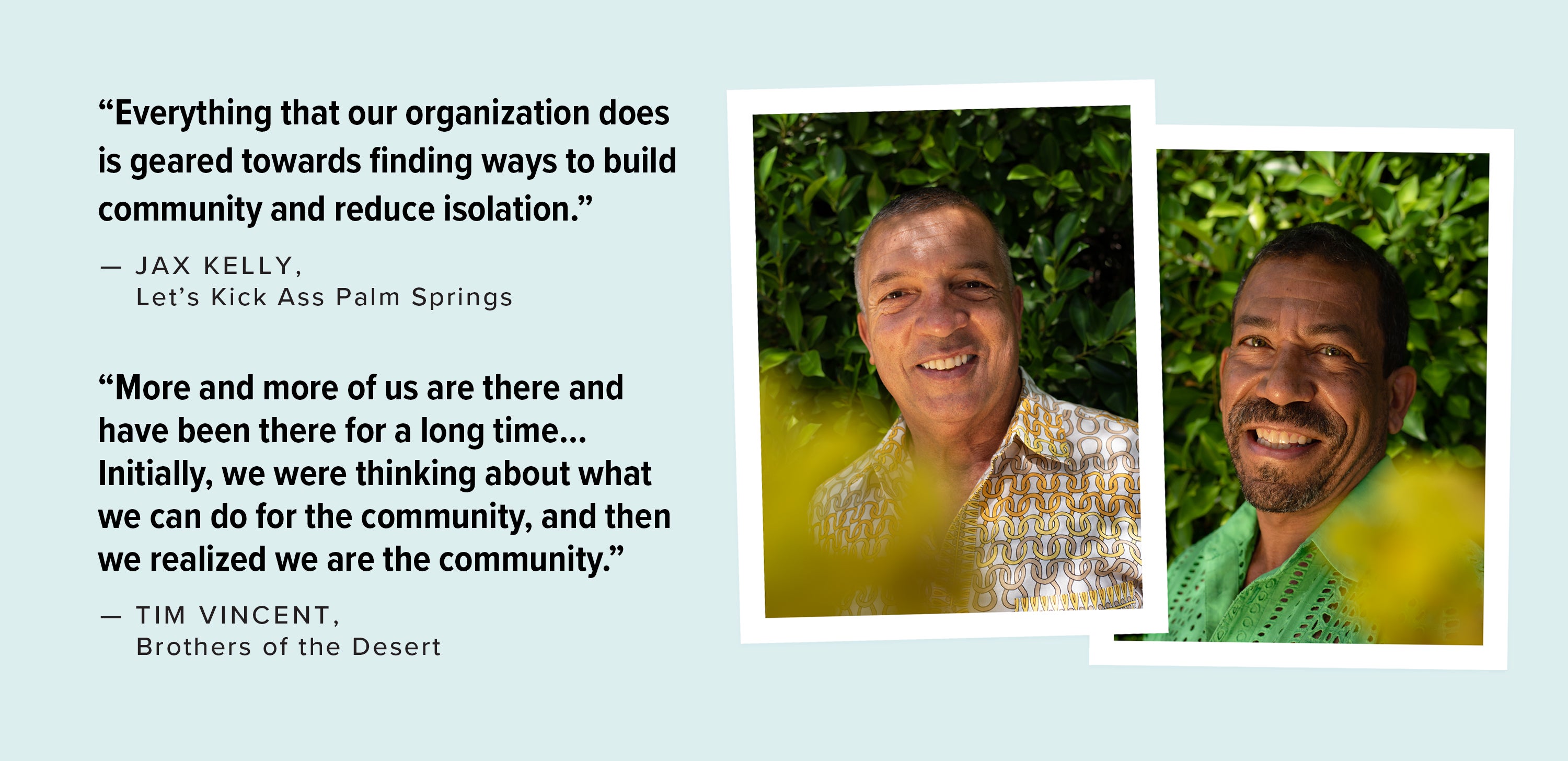
Photography by Mahaneela
“The key thing for us is that as people who are aging with HIV, we suffer from isolation, and it’s isolation that can have negative health outcomes,” said Kelly.
Vincent and Kelly noted that despite the ample programming centered on the gay community in Palm Springs, there’s a noticeable lack of groups with a specific focus on Black men.
So the two organizations teamed up.
They’ve been holding support groups and events led by facilitators for years, and the financial support from the grant will enable them to build out their programming and compensate those leaders.
“Our purpose was to break down the isolation that happens for Black gay people in the Coachella Valley because [this area] has a very significant LGBTQ community and does a lot of work in that community, but none of the work had been specifically located for Black people,” Vincent says.
Let’s Kick ASS Palm Springs focuses on the effects of AIDS Survivor Syndrome. The organization was originally founded by Tez Anderson, who coined the term.
“He felt that people who were long-term survivors had been witnesses to the plague, and as such, we’re suffering from a form of PTSD, which is what he termed AIDS Survivor Syndrome,” Kelly says.
Vincent notes that in surveys following the discussion groups and the summits that Brothers of the Desert hosts, participants often talk about finding pride within themselves and discovering newfound self-esteem.
He believes that combating isolation is just one part of why this work is important. The other is empowerment and community for those living with HIV.
Vincent’s work with his organization leans into that, aiming to address the necessity of mental and emotional wellness through community building.
“People talk about having a sense of brotherhood and how that really feels like it’s a helpful thing for them,” Vincent said. “That’s what we’ve been doing: helping to create a healthier community of Black gay men who are here in the Coachella Valley and them knowing that there’s a place to go.”
The Sankofa HIV Initiative
Bryan C. Jones, a longtime community organizer in Ohio, heads The Sankofa HIV Initiative.
Jones shared his outlook on community-focused work, saying that those who live with HIV should be treated with empathy, not sympathy.
“I felt I needed to change the culture … because [others] didn’t really value us as being an integral part of the solution,” said Jones.
Jones has also seen the impact of isolation and loneliness within his community.
The Sankofa HIV Initiative focuses on healing for all those living with HIV, though Jones holds a special place for Black gay men living with HIV and has addressed this intentionally. Jones has seen that many older Black gay men who were previously isolated come out to his events.
“We started having these healing weekends, and it became something that people clung onto as a lifeline,” said Jones. “I started to see people who had been isolated for 20, 30 years wanting to be a part of my work group, wanting to go to conferences and start speaking.”
The name of the organization is rooted in African principles, and the idea of “Sankofa” originated in Ghana. It means “it is not wrong or taboo to go back and fetch that which has been left behind,” said Jones.
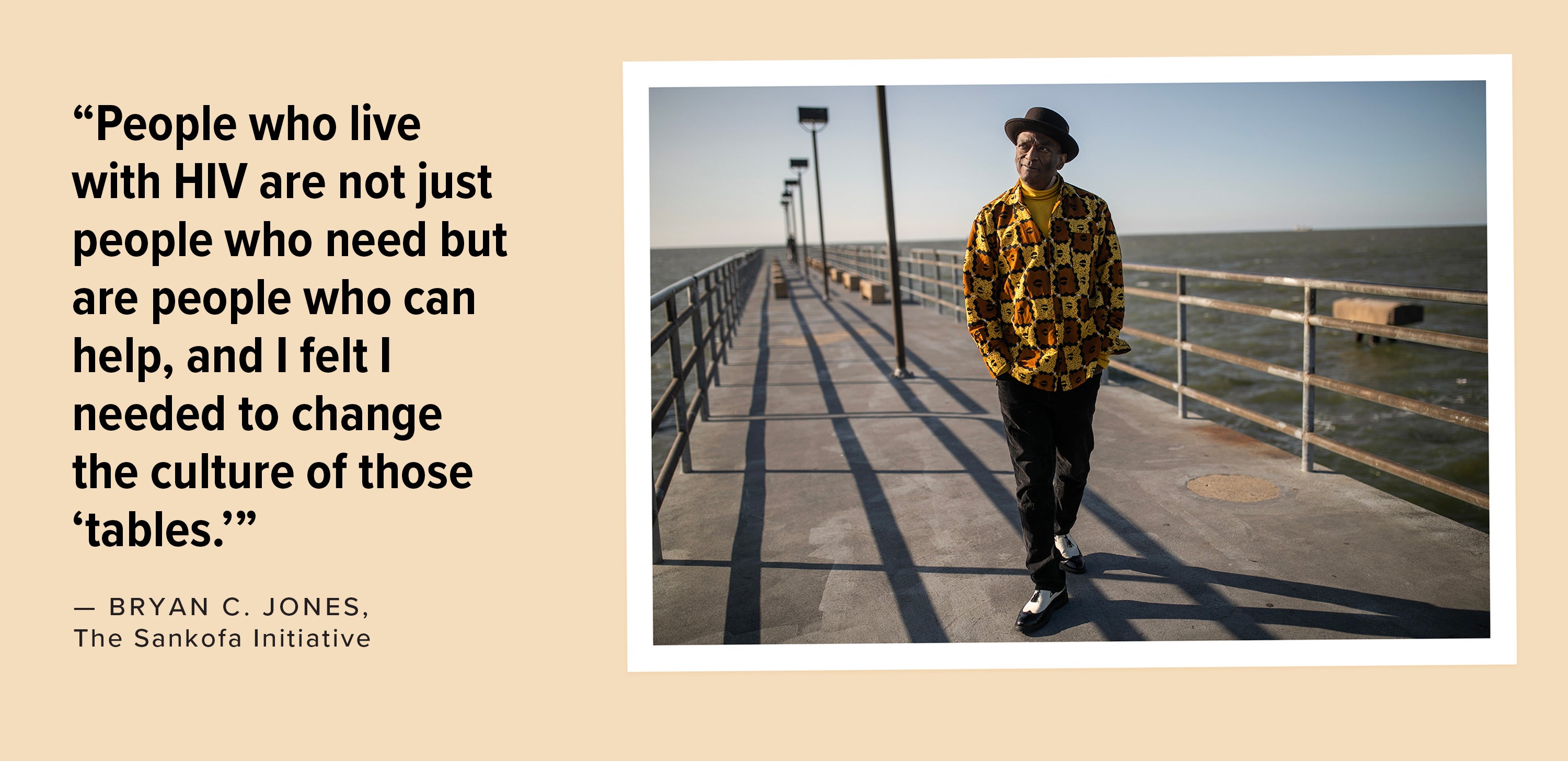
Photography by Maddie McGarvey
“People that are aging with HIV are at risk of being left behind, as well as young people … because they don’t know the history of the fight,” he added.
The Sankofa HIV Initiative “works to not just educate people living with HIV, but also works to educate providers and let them see how the people they serve have valuable information that they need,” he added.
Jones shared that he calls the work he leads DIRT advocacy. DIRT is an acronym for direct, inspiring, reachable, and teachable.
“Grassroots organizations have some funding, but DIRT advocacy holds programs with no funding because you’ve got to cultivate that dirt for the grass to grow,” he said. “We don’t have a whole lot of funding, but we get it done.”
The BEAM grant will support Jones’ programming efforts by funding a healing retreat weekend. While acknowledging this particular group is an underserved population, Jones paraphrases Audre Lorde when he says that none of us lead single-issue lives.
Jones was emphatic about the upcoming retreat, including conversations around health beyond HIV, in addition to delving into social, mental, and emotional well-being.
His goal is for those within the group to help each other cultivate healthier relationships with themselves, their partners, and each other.
“This program works to give them the education they need to survive and thrive,” he said.
Jones chooses not to use the term “out of care,” because he feels that blames the individual. He chooses to use “not connected to a network,” because together, we are stronger helping each other.
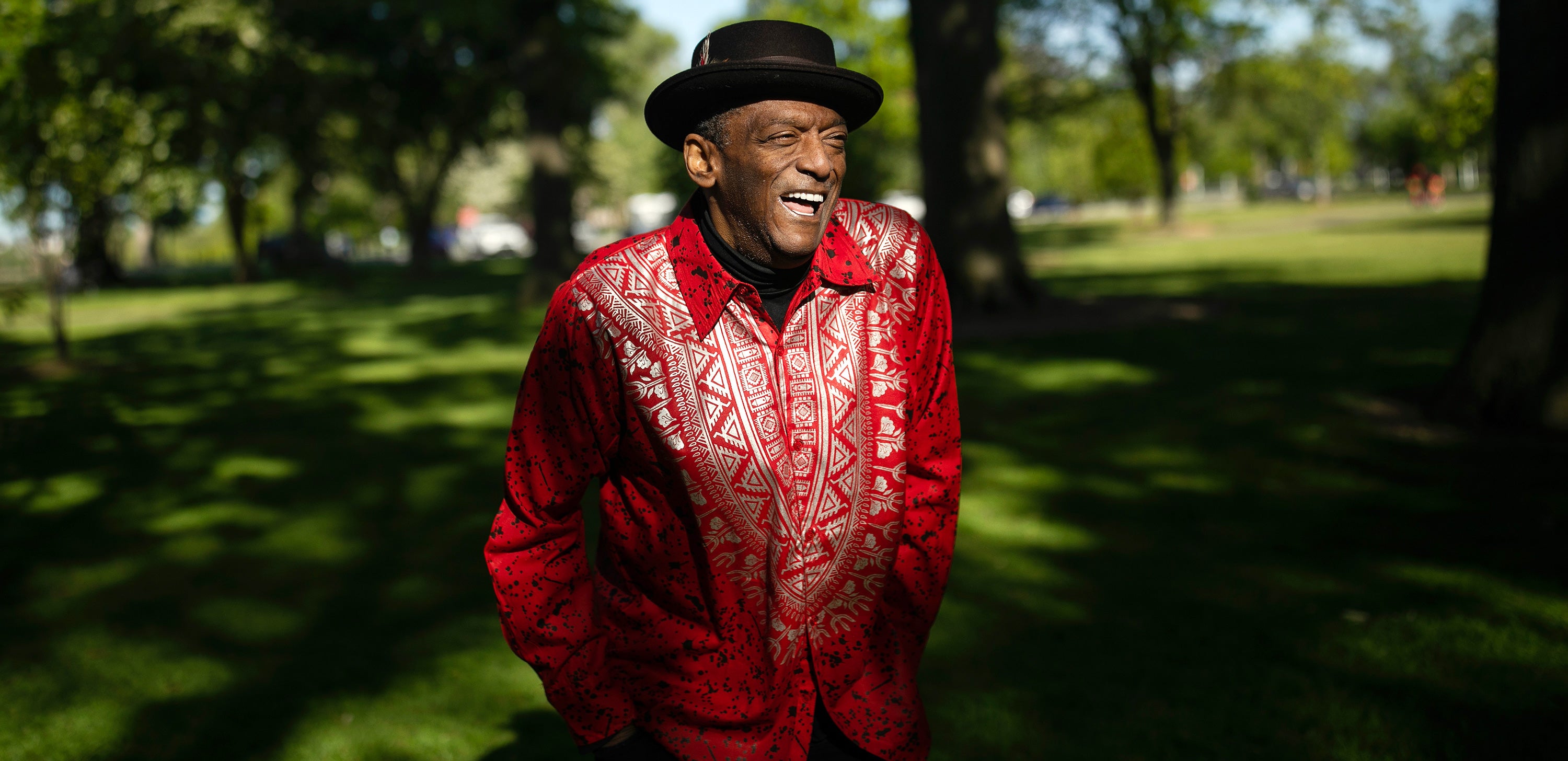
Photography by Maddie McGarvey
Takeaway
Impactful work is being done across the country to support the healing and empowerment of folks living with HIV, even when it doesn’t receive major media attention.
The partnership between Healthline and BEAM aims to shift the way HIV-positive communities are seen and supported by not only offering tangible resources for on-the-ground efforts but providing increased visibility.
“Building awareness in the community is important. Having a presence. When you have this presence, you can’t be ignored, and it reminds people that we need to be at the table and that we are visible,” Kelly said.
If you’d like to keep up with the organizations and their work, you can check out their websites or follow them and BEAM on social media.
